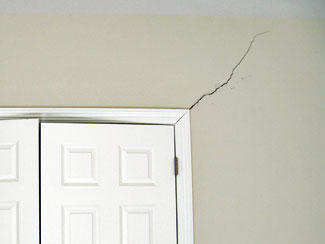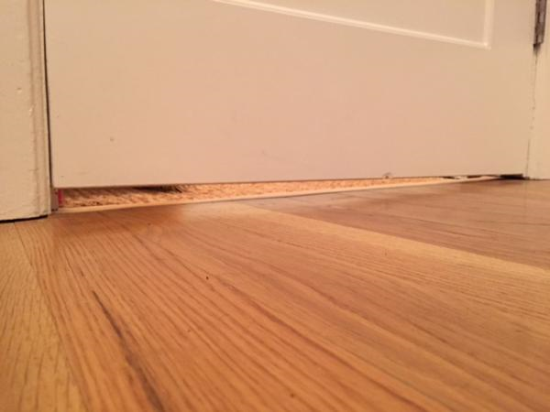FOUNDATION REPAIR
Your home it
is probably one of your largest investments, yet it is a lot more than that it
is where you raise your family, make memories and welcome your friends. I was
always told in life and relationships that you that you need to start with a
solid foundation. This holds true for
everything including your home. The more secure stable and solid it is, the
more confidence and peace you will have.
There are
many reasons why your homes foundation may begin to crack, sink or settle over
time.
There are
many signs and symptoms that can be observed that may indicate your home is
experiencing foundation settlement issues. These signs can usually be seen both
on the inside and outside of your home. Some of the most common signs are:
Outside
Stair – Step Cracking
A typical sign is very typical in brick and concrete block walls, as your home
continues to settle vertical cracks may widen, indicating that the wall is
potentially rotating outward.

Chimneys
One of the more terrifying and dramatic
signs of settlement is a chimney separating away from the home. Chimneys are
regularly built on a foundation that is not connected to the rest of the home,
increasing the risk of settlement.

Inside
Many of the signs you can see on the outside are transferred the inside of your
basement or crawlspace. Stair cracks for example may be seen in the foundation
wall block work. With poured concrete basements vertical cracks are more
common.

Drywall Cracks
Cracks in the Drywall throughout the house are a good indicator of settlement,
some are more obvious then others
Windows and doors
Less obvious
but just as troublesome are doors and windows, do any of your doors or windows
stick when you try to open or close them.

Have you had to move or reset a locking mechanism, or is there evidence of this
having been done before.

Now Hold on
just a second the cracks in my home are small they are not too bad a little bit
of settlement is ok. Remember big cracks where once little cracks.
So now you
know some of the signs what causes a foundation to settle?
Well your home is sitting on many different layers of soil, each has different
abilities to hold the weight of your home. Some layer have been there since the
earth was created, and in some cases some layers where brought in by builders
or developers. Typically soil layers get stronger with depth. Most typically
you will see a shallow layer near t5he surface that is mostly organic “Top
Soil” making it easy for plants sod etc, below that you might find layers of
sand, clay or rock depending on your location.
Settlement is simply the movement your home experiences when the soil below ca
no longer support the weight of your home. The 3 major changes that occur to
the soil are.
Drying and shrinking

Drought
After many
years of drought, clay soils dry out, and when clay dries out it shrinks. As
the soil around your house shrinks, it creates open space for your home to
settle.
Wetting and softening
Heavy Rain
As clay soils get wet it becomes soft and holds the water. Soft soil can be
weak, causing a home to shift or sink down into it. I liken it to stepping into
mud and your foot squishes down into it.
The same result might happen if water is allowed to sit or pond around your
home, the spoil will absorb the water and weaken the soil.
Compression of poorly compacted fill
soil
A common
practice for developers is removing soil from hilltops and filling in valleys
to create useable flat building lots. If the fill is not compacted well, it
will compress under the weight of the home.

So we have
identified what to look for and what some of likely causes are but how do I fix
this and what is it going to cost.
Well let’s start with
solutions that don’t necessarily work
Total Foundation replacement
With a total foundation replacement the soil is first excavated around your
foundation walls. The house is then jacked up and the slab and the foundation
walls are removed. Then a new foundation is built and the surrounding soil
replaced.
Ok this seems like a logical solution my foundation has failed so let’s replace
it with a new one.
The problem with this is it is very expensive and disruptive, the real problem
though is it does not address the real issue, the foundation was never the
problem it is the soil that is the problem. So you have now built a new
foundation on the same problem soil, it is simply a matter of time before it
breaks just like the old one.
Concrete Underpinning
This involves excavating soil from around the existing fitting and then pouring
larger footing beneath the existing footing. The logic is that if a footing is
designed to carry the house then a larger footing should be better. Wrong. Most
of the time the concrete underpinning is not extended past the “Active Zone”
that is beyond the troubled soil. The result is you will have the same problem,
however to repair later you now have l this extra concrete to remove or be
supported.
Solutions that we know
do work.

Steel Push Piers
Push piers are pre made of steel and a driven deep into the soil to bedrock or stable li
layer, these can be installed from the exterior or interior of your home providing
an opportunity to hydraulically lift your home towards its original position.

Helical Piers
A helical pier is another steel piering system. They are added in sections so
as to pier to the necessary depth. They can be installed from the exterior or
interior of the home

SHOULD I FIX MY FOUNDATION
So we have
highlighted some possible solutions of why your foundation may be failing, and
provided some potential solutions and methods to remedy the issue.
The question
still remains “why should I fix my foundation?” that crack was there when I
purchased the house or it is not going to get any bigger. Famous last words.
Well, let us consider a couple of things,
A foundation problem never gets
better on its own. It only gets worse and as it gets worse the higher the cost to
repair.
Resale value who wants to buy a house with a foundation problem.
Appearance, Foundation problems can cause ugly cracks, not only in the foundation but inside the home as well.
As your foundation fails and your house sinks and settles and moves, your windows and doors will stick and jam.
Foundation cracks let in water or moisture which can damage your living space, or attract mold.
Insects and rodents can get into your home through cracks in your foundation.
Ultimately
you are going to end up paying for the foundation whether you fix it or not,
some day you may want sell your home, and when you do the buyer will hire a
home inspector.
In addition when we sell a home we are required to complete a
seller disclosure explaining any defects with the house. So it is unlikely that
a new buyer will not be aware of the foundation issue. This may result in the
sellers simply not considering the house or negotiating a lower sale price in
order to facilitate the repair. So whether you fix it or not ultimately you are
going to be paying for it.
While I am
not a qualified engineer or construction expert, as a Real Estate Broker I have
seen many homes with various levels of foundation settlement. I have witnessed
the effect that it can have on resale values. In extreme cases it may even stop
a buyer from even proceeding as far as a viewing.
I have been fortunate to see positive results in having a professional
foundation inspector review and provide an estimate of the repair.
In some
cases they have indicated that a repair is not necessary, just some mitigation
and yard work to stop water from pooling near the house or a simple extension
to your downpipes, and a review in 6 month’s time. In other instances the
solutions have been to pier the house, yet depending on the level of damage this cost can be inhibitive or not.
Either way you will have to do something at some time in the future.
My recommendation is to be aware of changes in your home, and at the first
signs of any settlement, contact a professional in most cases the initial
inspection and recommendation is free.
Written by

Gregg "Aussie" Stilton
Rushmore
Real Estate Group Limited
Real Estate
Agent
(605) 939
5649
"From
dreams to reality, white picket fences are optional."